Submitted by Palak Shah
International Digital Collage practitioners open up about their Unique Art of Collaging
United States Architecture News - Dec 15, 2020 - 21:25 19154 views
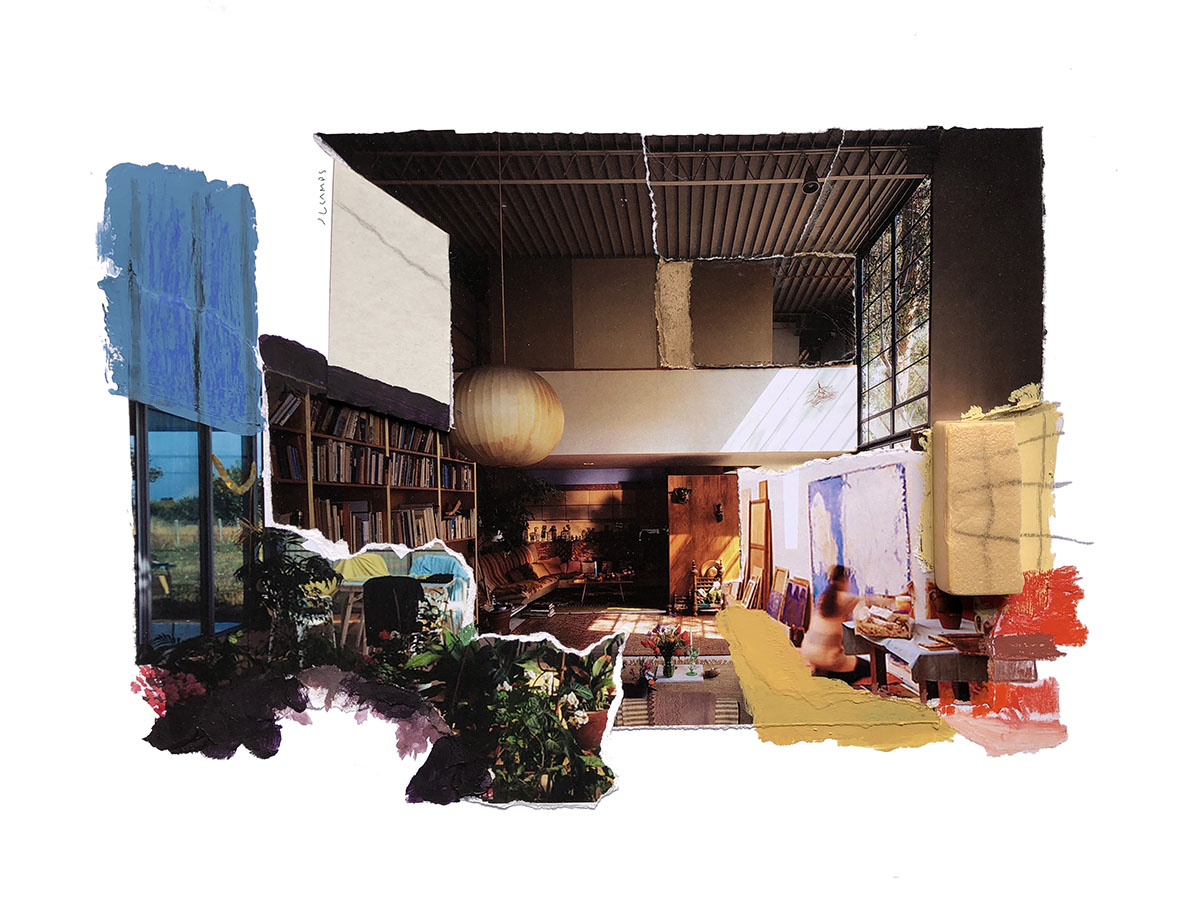
Originated by artists Picasso and Braque, 'Collaging' has traveled across iconic art movements like Cubism, Dada, Surrealism plus many more, the recent shift of this technique to the digital realm has resulted in creative prospects of various expressions and aesthetical representations. An increasing number of architectural firms and artists globally are embracing the art of Collaging as an exploration of potent ideas within an iterative process.
The Art of Collaging is received with open arms as in the end they are diverse fragments of familiar wholes. This simple graphical technique of delicate control by composing an assembly and juxtaposition marries different realities into a coherent environment, making it extremely lucid to comprehend complex ideas. These drawings also act as a medium to represent the ‘Architecture that Isn’t’ but ‘Architecture that Could be’, shifting the focus from pragmatic real-life constraints to free-flowing possibilities.
Following this vogue, here is a peek into some of the trend-setting collages created by contemporary artists and architectural ateliers around the world that are inspiring and ingenuine. Here, Collage enthusiasts open up about their motivation, inspiration, and unique workflow. They not only challenge your conventional perceptions of architectural drawings but also reflect a strong divergent thought process.
Silvia Garcia Camps, an artist from Barcelona, brings together different Architects into the same space through her imaginative 'What If' Series. Her fascination for collaging stems from her distinctive point of view to reiterate that no one really invents anything, one just borrows and rejigs references at hand, based on the need and requirement of every project. Silvia's prefers architectural representation through Collaging as it serves as a medium to picture different realities in the same place and enables her to take a more personal approach towards her work.
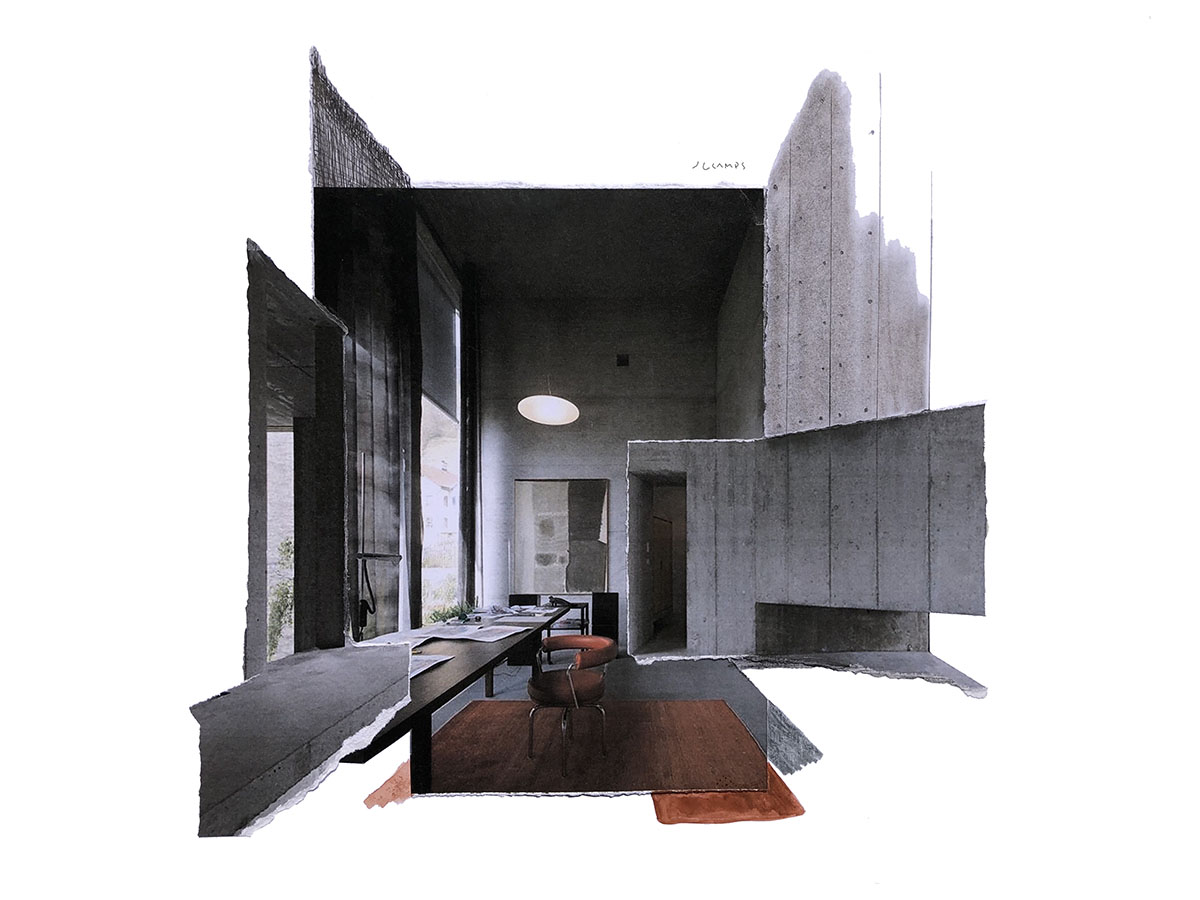
What if Buchner Brundler and Peter Zumthor had worked together?
Residential Building, Buchner Bründler Architekten, Bläsiring 2017 · Atelier Zumthor, Peter Zumthor, Haldenstein 1986 SG
Image © Silvia Garcia Camps
 What if Flores & prats, Alvar Aalto, Mies van der Rohe, and Lilly Reich had worked together?
What if Flores & prats, Alvar Aalto, Mies van der Rohe, and Lilly Reich had worked together?
Sala Beckett, @Floresyprats, Barcelona, 2014-2016 · Villa Mairea, Alvar Aalto, Noormarkku, Finland 1939 · Villa Tugendhat, Mies van der Rohe + Lilly Reich, Brno 1928
Image © Silvia Garcia Camps
On being asked about her thought process behind these insightful Architect encounters and her workflow, she reveals, “First of all, I go through the big amount of references I have and pick one, without knowing exactly what type of new space I’ll end up creating. From that moment on, I keep going through the references and see which other/s fit better to end up creating a new reality made of bits and bites of other projects. Once I have chosen the two or three projects that match, it’s time to assemble them. To do so I use very basic materials, or handy materials, never buy expensive stuff, as I feel it’s good to upcycle materials that once were leftover and now have the chance to generate somehow an artwork. The assemblage process is very intuitive and I try not to follow any preconceived ideas about the final result. In the end, the collages are a new reality expressed from a very personal point of view."
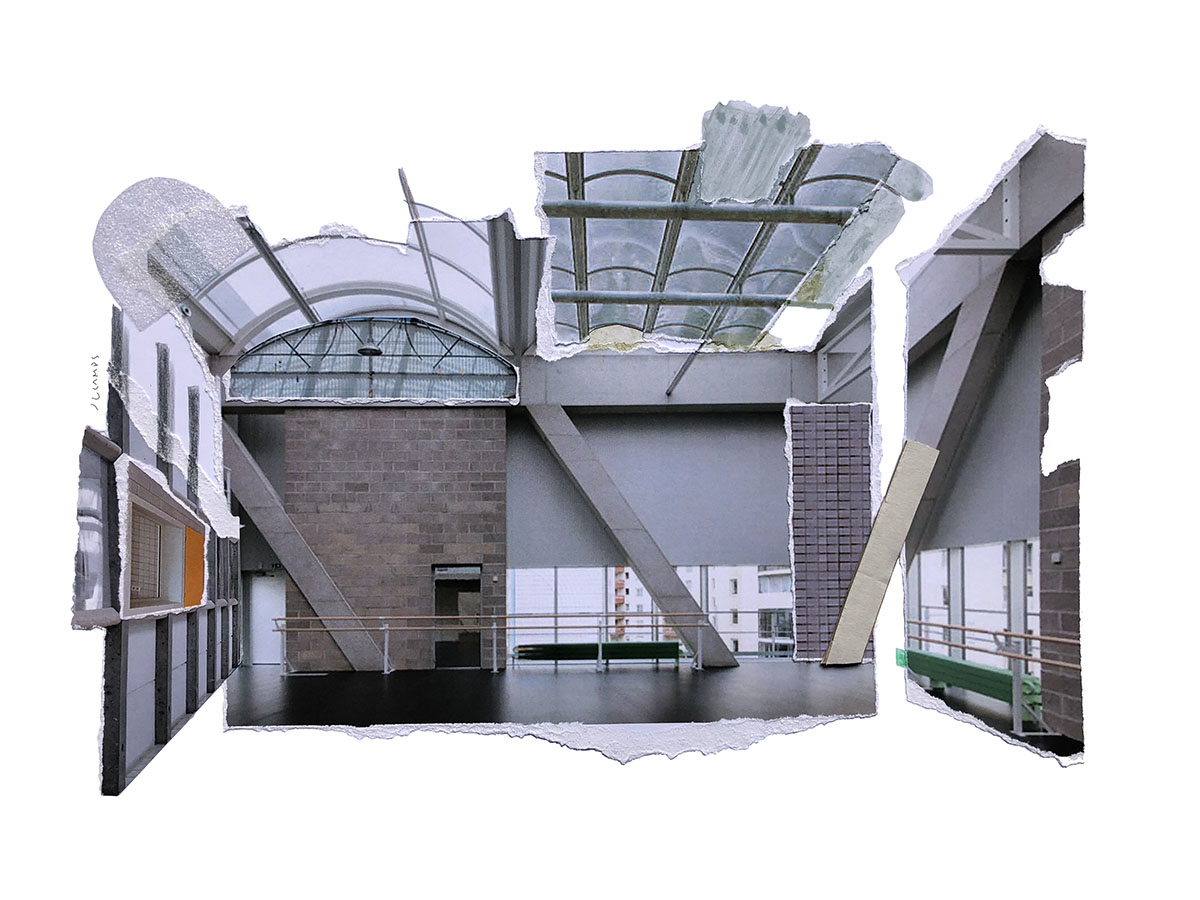
What if Jørn Utzon, @lacatonvassal, Aldo Van Eyck, and @bruther_architecture had worked together?
Bagsværd Church, Jorn Utzon, Bagsværd 1976 · Cultural and Sport Center, Bruther, Paris 2011-2014
Image © Silvia Garcia Camps
Matthias, a native of Germany, likes to look at the world as a collage. Despite fifteen years of his dedicated involvement in digital collage creations, he says his fascination for this art has never faded.
“I’m more interested in architecture's representation of ourselves. We observe architecture not only in its function or its sheer aesthetics. We observe it as subjects with our unconscious, our personal history, our cultural rootage, and all our clandestine longing. Good architecture has to incorporate this subtle interpretation. An architect has to adjust the building to the architecture of our psyche so to say. A house is often a metaphor for the individual. The cellar is 'the unconscious'. In Germany, we say about someone who makes a big mistake to have “roof damage”. A building is like a poem. The Elements refer to each other like rhymes. And we interpret it very personally. In my collages, I am free to construct “architectural poems” independent from the statics or functions. So I am free to concentrate on architecture as a representation of ourselves. That’s a lot of fun.
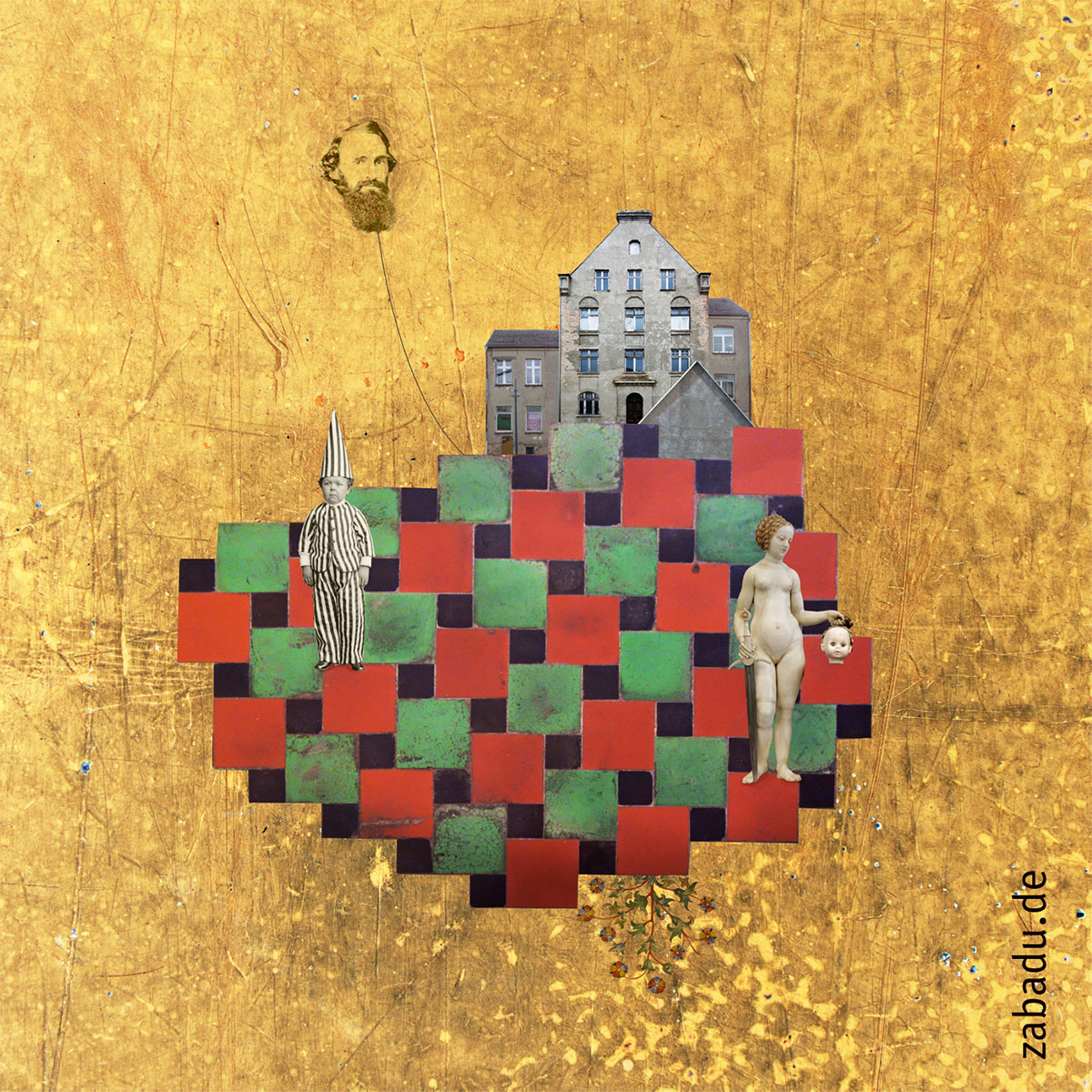 Golden Boy (September 2020). Image © Matthias Jung
Golden Boy (September 2020). Image © Matthias Jung
"My work is intuitive. I don’t ask “which era connects with another”. "I just search for coincidence. There is no tension when the elements in a collage are too similar. And the artwork is absurd and implausible if the elements are too diverse. Often it’s only a subtle difference between a dreamlike impression and a ridiculous botch. The main challenge is to bring the soul and authenticity into the Photoshop-construction," describes Matthias, as he talks about his take on Collaging as an architectural representation.
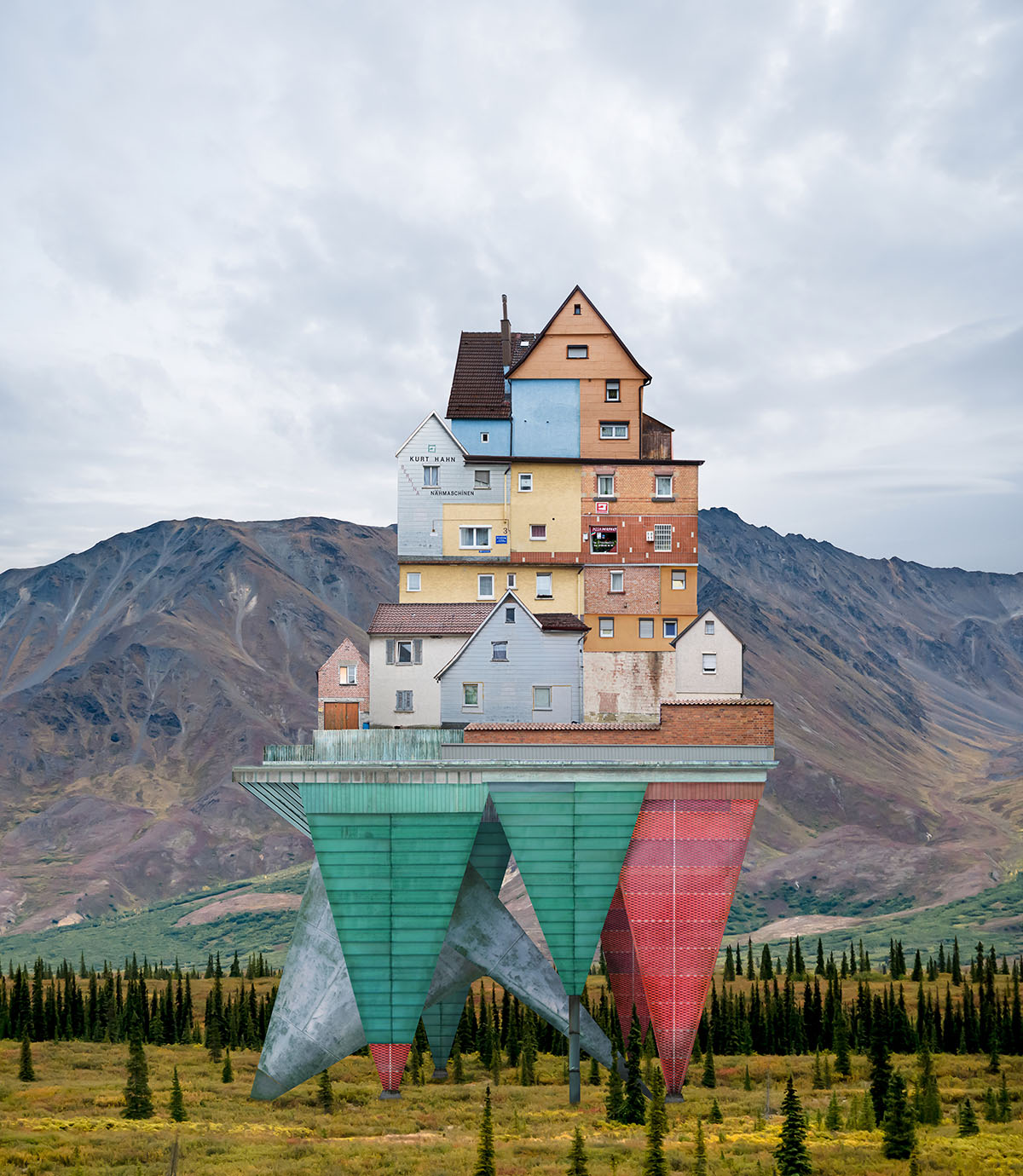 The Long Established (2018). Image © Matthias Jung
The Long Established (2018). Image © Matthias Jung
Reflecting on how and when he started Collaging, Matthias adds, “I did my first architectural collage as a child. It was analog of course. With scissors and glue, I formed a building that is already very typical for my style. I’m working on digital collages for 15 years. And I rediscovered architecture as a topic in 2014. Why do I feel so attracted by architecture? People travel the whole globe just to see architectural sights. Good architecture is like good music. It inspires us and it connects us with something beyond our consciousness. For me, it’s a miracle how a constellation of forms can function that way. Why are we so touched by a medieval city or a roman church? I guess the architecture reflects universal principles. There is a mathematics of beauty. Good design depends on mathematics but it can never be derived from mathematics. The same with music."
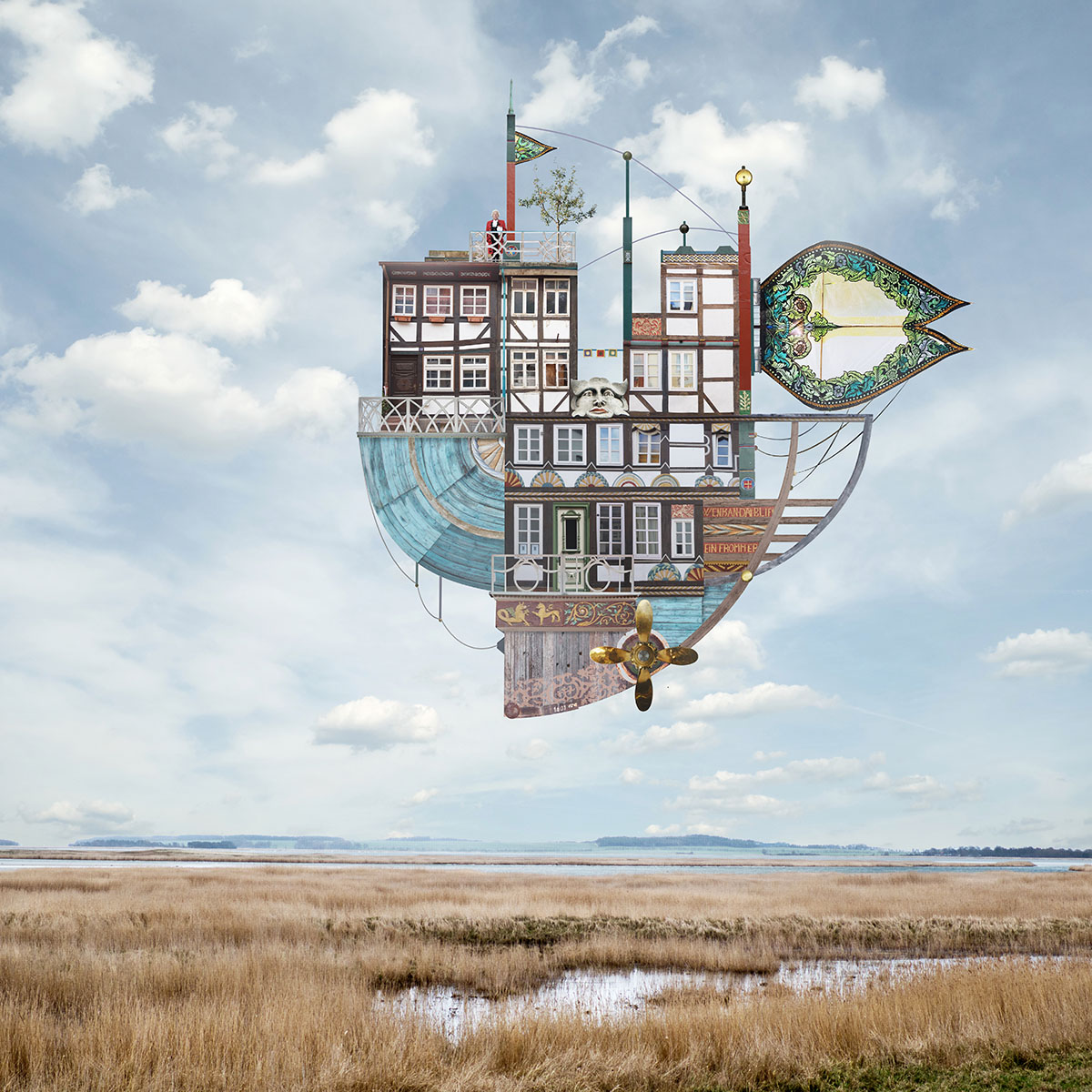
Image: Lord Kumulus and the journey to the Blue Moon” (2017). Image © Matthias Jung
3. Fala Atelier
"Portraits" as Fala likes to address their vivid Collages, are more than a mere technique for this Young firm founded by Filipe Magalhães, Ana Luisa Soares, and Ahmed Belkhodja. For them, Collages are meant to be poetic expressions that define the distance to realities. Outlining the goals of the firm's Collage making practice, Founder Filipe explains, “Portraits allow us to detach from reality and create a limbo, an undefined space where the idea is defined but the project is not (yet). This undefined condition allows us to move freely inside the architectural idea and allow the construction site to be still a part of the process. In the end, once the building exists as such, it becomes the collage, or at least, a more precise version of it."
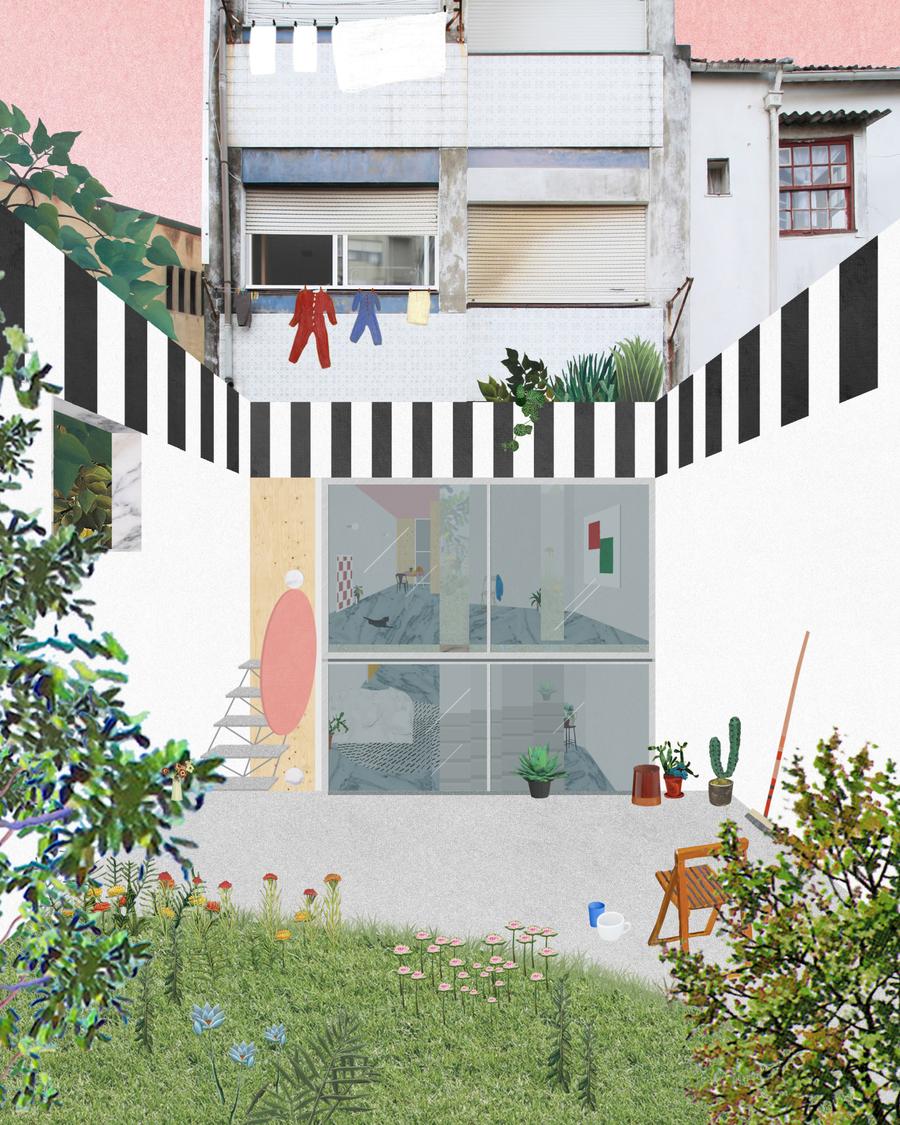
Image: Uneven house, Porto. Image © Fala Atelier
While some firms adopt collaging as an integral part of their Iterative process, some believe it enables the prospective clients to understand the complex ideas that an architect desires to deliver. In the case of Fala Atelier, they believe it posses the ability to accomplish both for their design practice. Filipe adds, “We produce these images for ourselves, during the process, and we do hundreds of versions of them. They are easy, fast, understandable. From that point, we show them to the clients who, since very unaware of what to expect from an architect's representation perspective, tag along with it. A nonarchitect fully understands and accepts the collage."
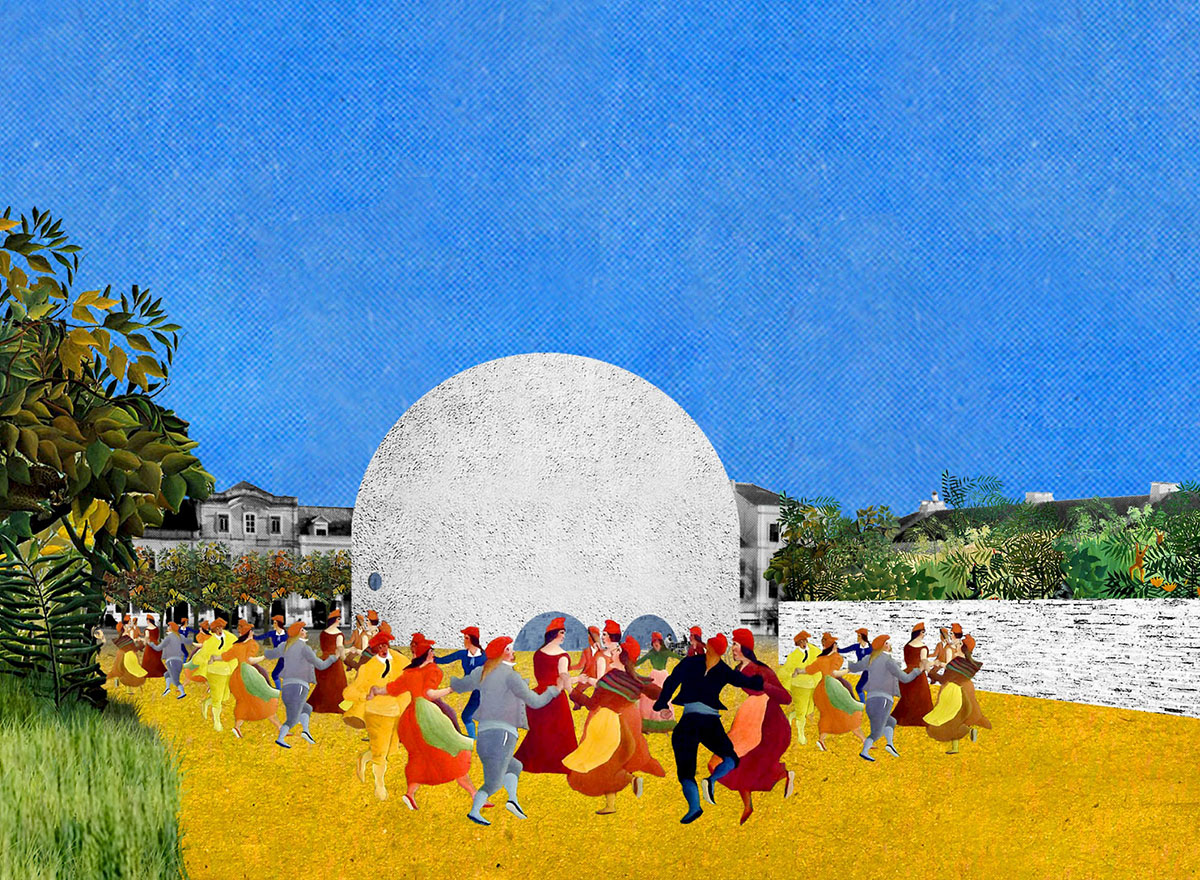 Image: New Setubal Public Library. Image © Fala Atelier
Image: New Setubal Public Library. Image © Fala Atelier
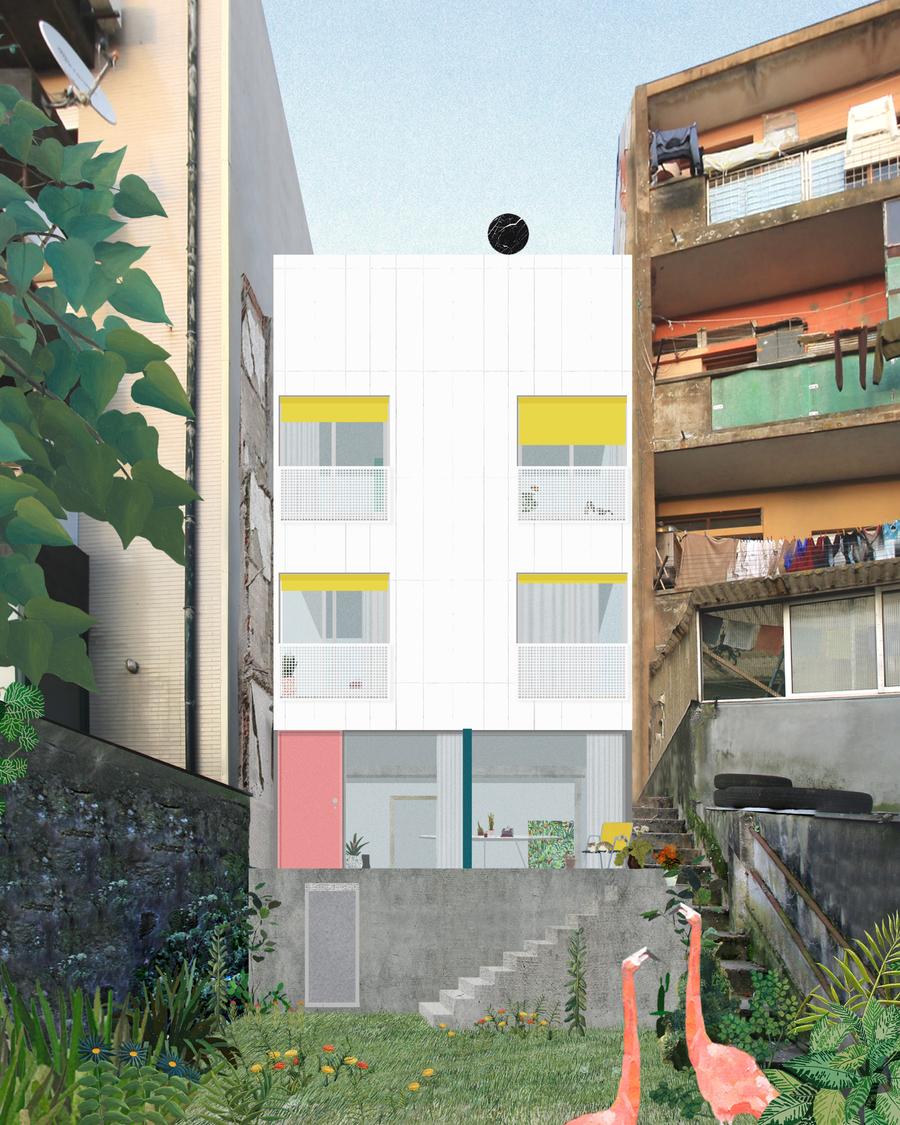 Image: House and an Atelier. Image © Fala Atelier
Image: House and an Atelier. Image © Fala Atelier
Known for deconstructing the conventionally constructed environment of architecture, Anastasia, a visual artist from Sweden loves to explore the underlying spatial energy of a place. Elaborating on her original process of Collage creation, Anastasia delineates, “In my practice, I turn to collaging as a way of constructing visual archives, where one single image comprises many layers and elements of the architectural environment. I see collage as a handy tool to convey the integral image, the essence, and the spirit of the place. As we are experiencing a place, its fragments, textures, smells, shapes, compositions, and shades are being imprinted in our memory. Photography is one of the most common ways to preserve the memory of the visited site. While a single photo usually captures a smaller frame of a city or village, collage creates a space for the coexistence of multiple images, spanning diverse parts of the environment. It is a dense ecosystem of articulated architectural fragments and narratives that provides an immediate sense of the pictured place."
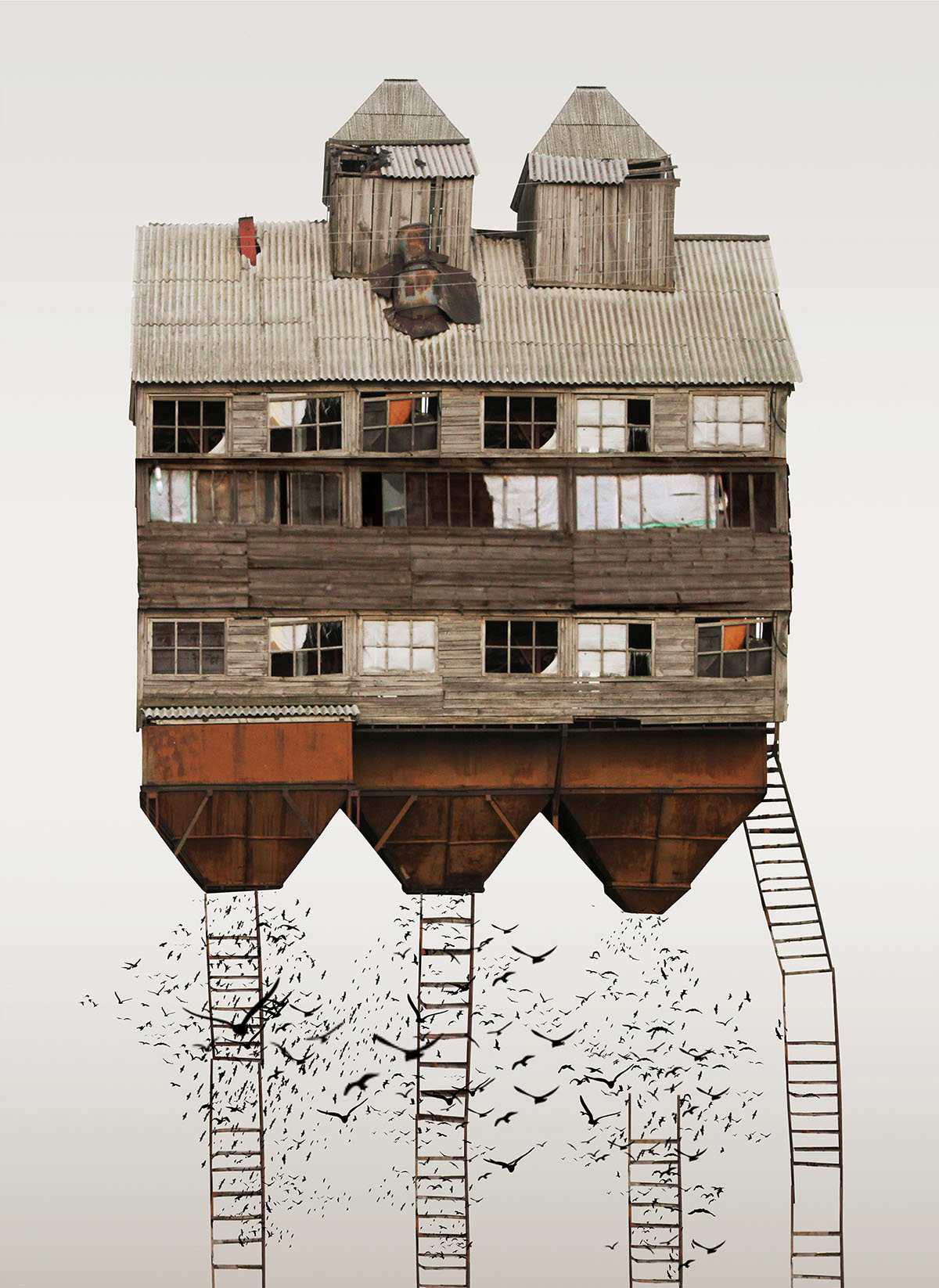 Image: Genius Loci_Sideways Encounters_Silo_Somewhere in Russia. Image © Anastasia Savinova
Image: Genius Loci_Sideways Encounters_Silo_Somewhere in Russia. Image © Anastasia Savinova
Talking further about her work and methodology, she continues, "My work is connected to the Ancient Romans’ concept genius loci - a protective spirit of the place. In contemporary usage, genius loci refer to the location’s specific atmosphere. To collect material for my collages I experience the place by walking and taking pictures. I travel, observe, and document. I try to identify traits of the site: what I need to record in order to tell a story about it, what is authentic and true here. Streets and mountain passes encounter on the road and off-road is a rich source of visual information. At the same time, all the encountered environments contain something incorporeal, and I believe that photomontage helps to capture this.
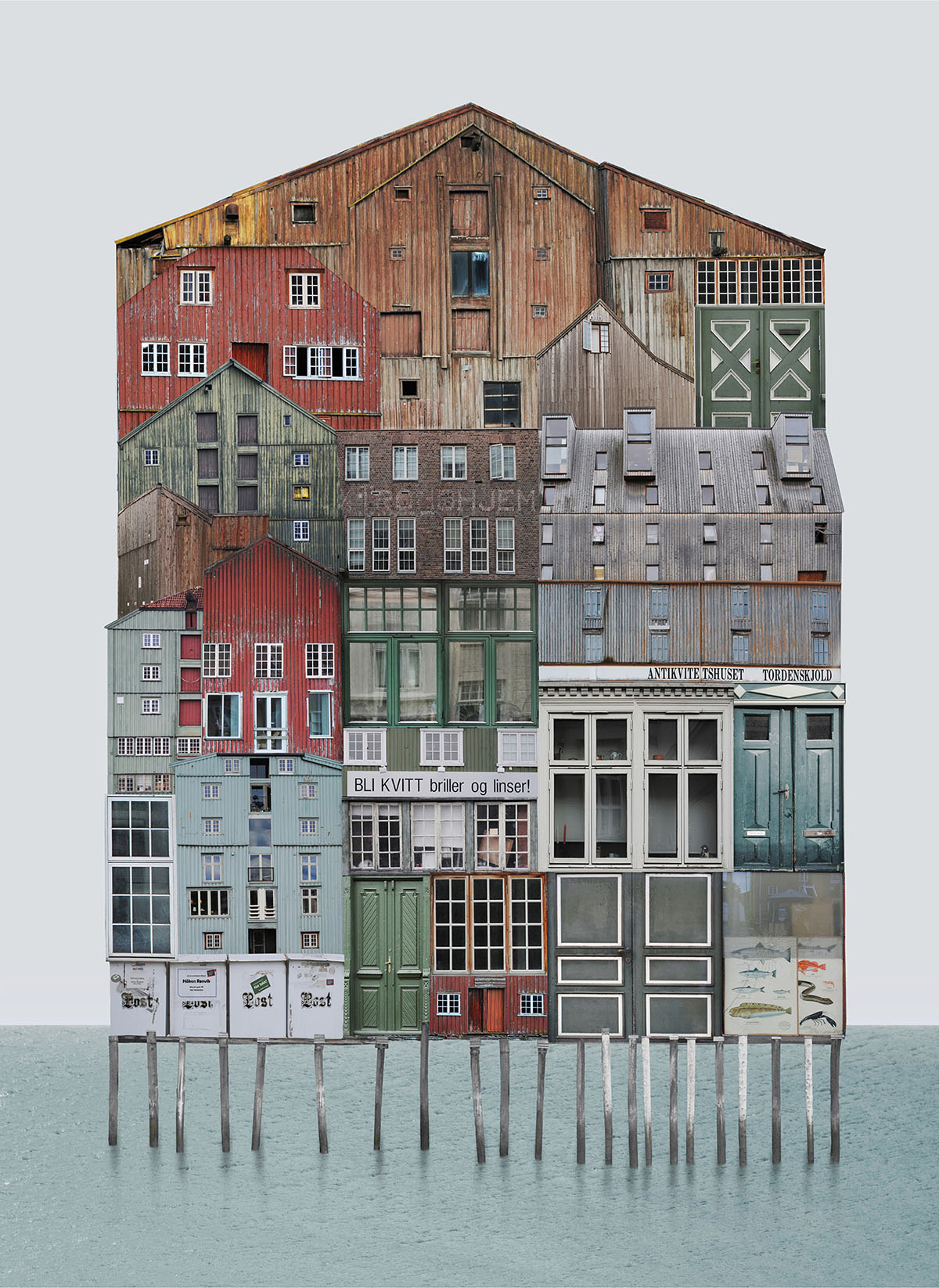
Image: Genius Loci_NO_Trondheim. Image © Anastasia Savinova
"My work balances between fiction and documentary. New imaginary architectural worlds are the way to comprehend the factual ones and to visualize the feeling of them. The photomontages are almost seamless so that the collaged building is perceived as a real one. I build it until I myself believe it is real and it is true to the way I remember the place. These collages-archives become keepers of the memory and the spirit of the Place."
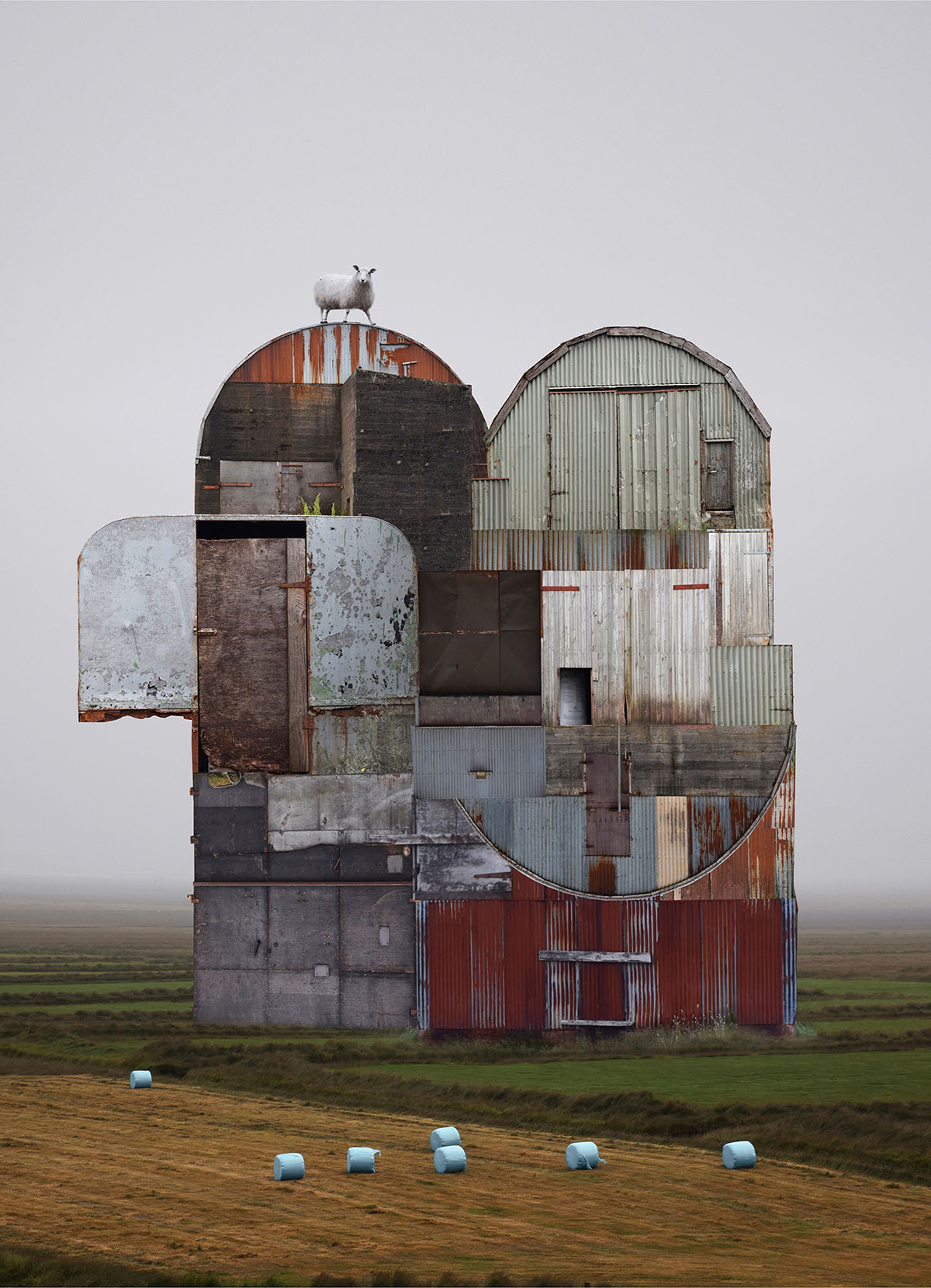 Image: Genius Loci_Sideways Encounters_somewhere in Iceland, sheep inspecting their hay. Image © Anastasia Savinova
Image: Genius Loci_Sideways Encounters_somewhere in Iceland, sheep inspecting their hay. Image © Anastasia Savinova
5. Beomsik WON
WON, a Korean Artist and author of the Futurist series 'ArchiSculpture', is bound to baffle one's conventions with his complexly ordered architectural sculptures, that challenge all laws of structure and gravity. Capturing elements of architecture from the past, WON attempts to define the future through his artwork in the present, by dismantling photographs banked from his extensive world travels. Through the process of Collaging, he manages to create a strange paradox and challenge architectural typologies. At first glance, one is aware of the impossible co-existence of the overwhelmed cityscape in a single frame, yet there is a sense of shuttle skepticism, What if??
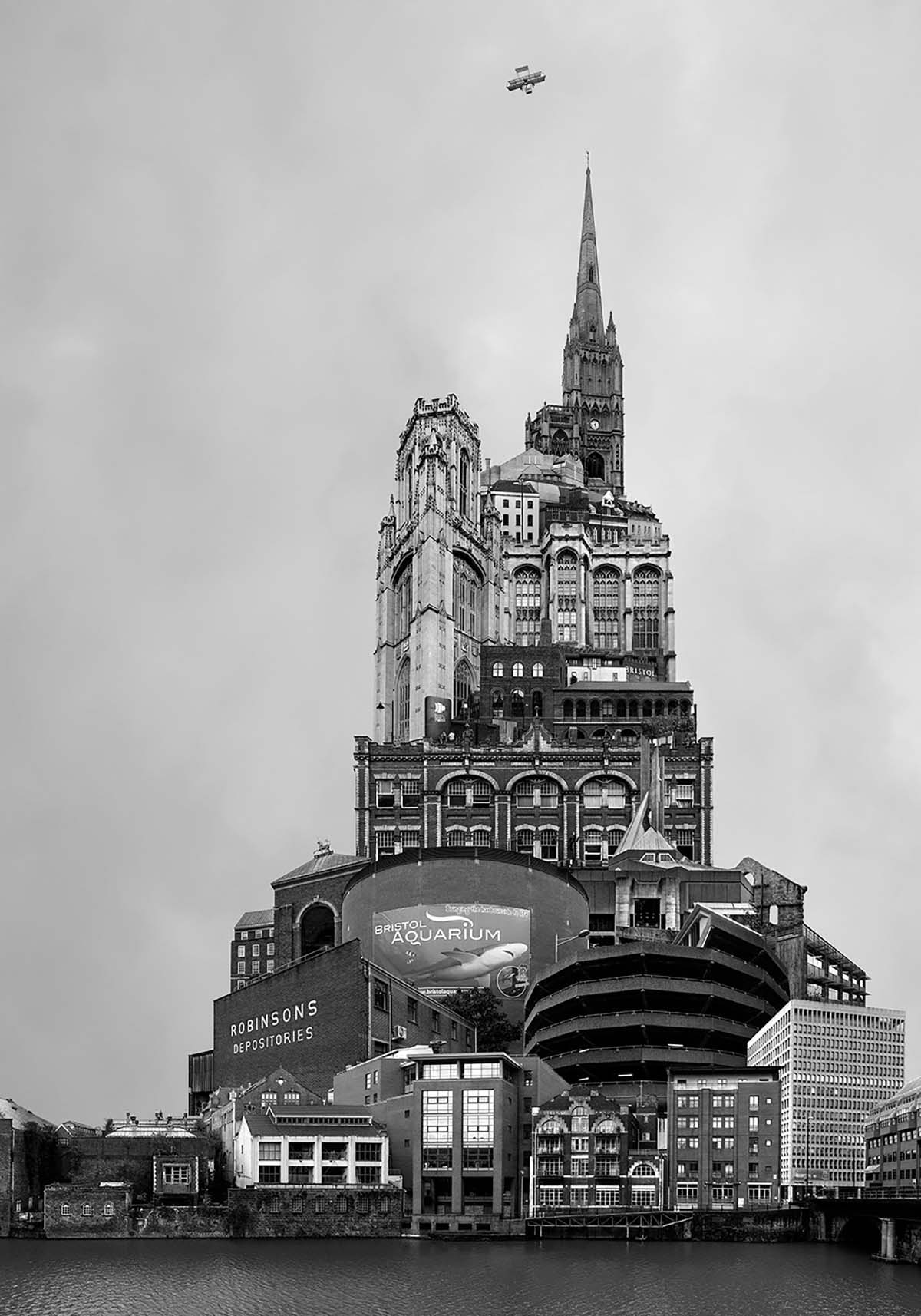
Archisculpture 056, 2020. archival pigment print, 100x70 or 171x120cm. Bristol in the UK, Red Nose Day, 100×70 or 171x120cm. Image © Beomsik WON
Advanced digital processing tools allow WON to realize his creative imagination into colossal artifacts. He attempts to use photography and collaging to create a spatial environment by removing dependent fragments and transforming them into independent marvels of their own. He marries different scales, material, time, and space into a stimulating juxtaposition that is sophisticated and thought-provoking.
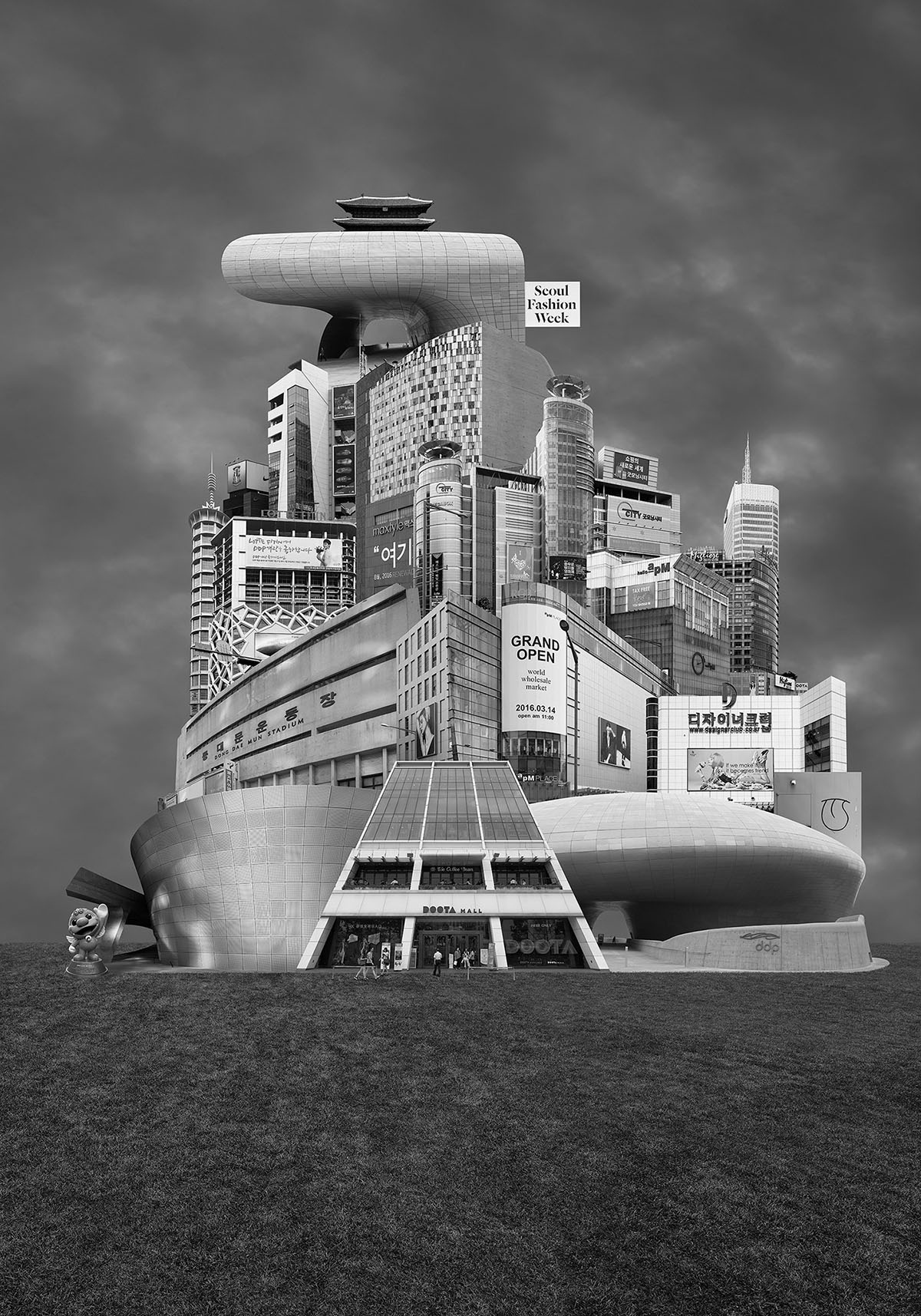
Archisculpture 051, 2016. archival pigment print, 100x70 or 171x120cm Dongdaemun district in Seoul. Image © Beomsik WON

Archisculpture 057, 2020. archival pigment print, 100x70 or 171x120cm. Silicon Valley, USA. Image © Beomsik WON
These extensive series and digital works are examples of how far the art of collaging has come, and that they are excellent tools to realize creative prospects and display diverse expressions of free-flowing imaginations. With one's own individual touch, the art of “collages" can be adopted and explored in endless directions.
Cover Image: House in Coutras, Lacaton & Vassal, Coutras, 2000 - Eames House, Charles & Ray Eames, California 1949 · Lara Ríos House & Atelier, F451 Arquitectura, Gijón. Image © Silvia Garcia Camps
